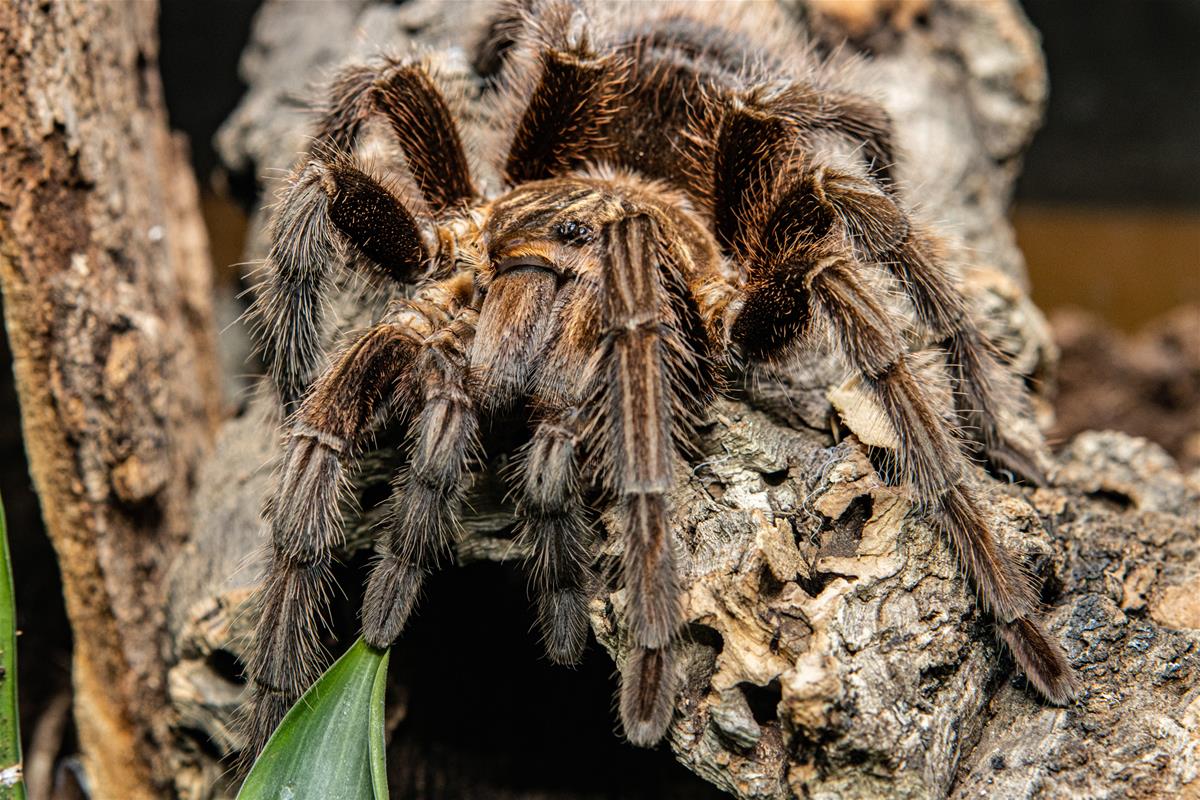Viewable


Location at the Zoo
Americas
Global Range
Africa
Red Island Bird-eating Tarantula
Phormictopus atrichomatus
The Red Island Birdeater (Phormictopus atrichomatus) is a large, heavy-bodied terrestrial tarantula native to the Caribbean island of Hispaniola. Adults can reach a leg span of up to 20–22 centimetres (8 to 9 inches) and weigh over 80 grams, making it one of the larger tarantula species in the region. Its colouration is deep brown to black with striking reddish setae (hairs) on the abdomen and legs, especially prominent in mature individuals.
The species is named for its Caribbean island origin and reddish hues, not for consuming birds—like other “birdeater” tarantulas, it primarily preys on ground-dwelling animals.
Conservation Status: IUCN

Distribution
Endemic to the Dominican Republic, though the exact range within the island is not fully documented. May inhabit tropical and subtropical forest zones.
Habitat
Prefers humid, warm forest floors, often found in burrows or under rocks and logs. Like many New World tarantulas, it is fossorial (burrow-dwelling), emerging primarily at night to hunt. The species thrives in leaf litter and soft substrate, where it can dig and ambush prey.
Diet
Carnivorous. Its diet includes insects, small lizards, amphibians, and other invertebrates. Like all tarantulas, it subdues prey with a bite and injects venom to liquefy the prey’s insides, which are then ingested.
Despite the "birdeater" name, this species does not typically prey on birds, though it could in theory take down nestlings if encountered opportunistically.
Reproduction
After mating, the female produces a large egg sac containing up to 100 or more eggs, which she guards within her burrow. Spiderlings hatch after several weeks and stay near the mother briefly before dispersing. Females are long-lived, often surviving 15 to 20 years, while males typically live only 2 to 4 years after reaching maturity.
Adaptation
- Urticating hairs on the abdomen are used for defence, flung at predators when threatened
- Powerful fangs inject venom and help subdue prey
- Thick, hairy body aids in sensory detection and thermoregulation
- Burrowing behaviour protects against temperature fluctuations and predators
- Warning postures (rearing up with fangs exposed) help avoid unnecessary conflict
Threats to Survival
- Habitat loss due to agriculture and deforestation on Hispaniola
- Illegal collection for the exotic pet trade
- Persecution due to fear or misunderstanding of tarantulas
- Small, localized populations could be impacted by environmental change












